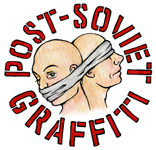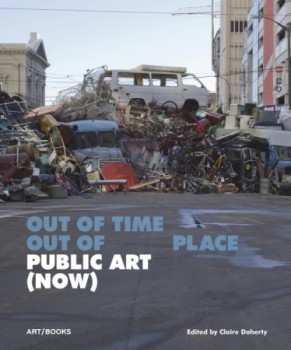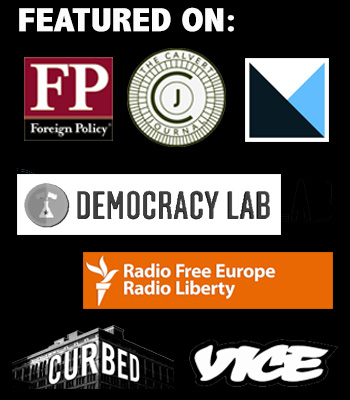“Anyone who does not simply refuse to perceive decline will hasten to claim a special justification for his own continued presence, his activity and involvement in this chaos. […] A blind determination to save the prestige of personal existence, rather than, through an impartial disdain for its impotence and entanglement, at least to detach it from the background of universal delusion, is triumphing almost everywhere.”
– Walter Benjamin, ‘One-Way Street’
De-industrialization has transformed major urban centers of the Western world like no other process since industrialization itself. Other processes have proven more transformative of larger sections of our physical spaces and easily capture the daily lives of more people in a more direct way – including suburbanization and the role it has had in changing demographics and densities, or militarization and the role it has played in shaping urban space as space of potential/realized techno-conflict, even on a global scale, or expanding layers of technological proliferation and the role waves of technology have played in washing up old boundaries and interactions and in redefining individuated life.
These three of many overlapping processes give form to urban life and shape cities as experienced by the inhabitants, but if we define the ‘urban’ in terms approximating the origin, then the urban, as argued by Lefebvre, “[depends] on characteristics of society as it existed during the course of industrialization.” In other words, it is the location created for and by a society of production. When seeing the urban through a lens of production rather than gazing over the surfaces of the components giving it shape, than de-industrialization becomes the great contemporary transformation, or dislocation, of meaning in urban life.
Twentieth-century Russia was shocked into modern material existence through modernizing frenzies including multiple five-year plans and a trenchant ideological affinity with the factory. Now industry has been largely de-urbanized (at least in comparison to pre-1991) and the urban factory emptied of the material means once depended upon to reach the now-dimmed radiant future.
If the industrial city expanded to its contemporary form because of the industrial revolution and production – and the population, physical environment and concept of the city grew out of this production – then what does it mean for former factories to lose their function to the networks of chain-smoking artists forging their impressions and views of the world inside its bowels? This question confronted us in every neighbourhood while traveling through Moscow as the crude, beautiful rectangular prisms housing former factories dotted our path through the cityscape, and often we would find them teeming with creative life.

A dark exterior corridor through the heart of ‘ArtPlay’ campus. March 2012. Moscow, Russia. (Photo: Nicholas van Beek).
I lived in Montreal for years and I visited many of the former industrial cities of the U.S., such as Buffalo, Cleveland and the ‘Industrial Ruins’ capital – Detroit – often with the purpose of urban exploration, so I was used to the narrative of decline and especially used to the smell of urban decay. In these centres former factories seemed to have five (or more) possible destinies awaiting them. They were either i) converted into housing, including condos/lofts or commercially zoned rental properties, ii) a multipurpose space held together by affordable costs, iii) appropriated by the public as a historic site, often with partial destruction, iv) neglected into disrepair by everyone but locals who use the site informally, often as a location of ‘off the grid’ expression, v) destroyed.
But something else has happened in Moscow, and while we were criss-crossing the city this March in search of graffiti and dissent one of the many ‘art-factories’ would often take us in for a delightful cup of coffee and a gallery showing, or a beer and rest. Never for a second could we escape the secret churning in the bowels of this delight: these spaces were designed to produce the freedom of the proletariat, and now produce only bourgeois life. The social life of those interested in artistic, public life seem centered on these sprawling industrial campuses where art shops, coffee shops, gift shops, galleries, cafeterias, studios, bathrooms tattooed in schizophrenic marker, and floor-to-ceiling windowed offices creep out of every crevasse and doorway, through which one expects to hear a rumbling assembly line, or even see the glow of a fulminating forge.
Maybe it is Europe, and that factories built here must be re-introduced into a new era due to spatial or ideological constraint. While traveling around Eastern Europe last summer we visited Lodz, in central Poland. We had heard it was at one time a manufacturing and textile capital of central Europe, and at another the second largest Jewish Ghetto after Warsaw. The red exterior of Manufactura, a former textile factory built in its enormity during the late 19th century, dominates the city and now sits as a re-developed, enormous mall. Phrases such as “Enjoy the Fruits of Life” or “Treat Yourself” now extend out over this new consumer city from sage, multi-coloured banners hanging within a new glass atrium, projecting commands over the former ghetto, toward the grown over, nearly invisible mass graves where the systematic murder of an innumerable amount of people had once been produced by pure evil. Places such as these inspired the documentary After the Factory, which compares the de-industrialization of Lodz with the famed degradation of industrial Detroit.
Of course, converting industrial properties into alternate usages is nothing new, but what is remarkable in Moscow is how effectively a network of moneyed, artistic communities have taken over space for the purpose of art and design. At mid-day BMWs and Mercedes fill the courtyard lot of our most frequented art factory. The gift-shops offer the creations of in-house locals, which are anything but inexpensive despite any residual images of a starving artist flashing up in your mind while you browse. Two security guards watch over the premises night and day, peeking out of windows, preventing shutter-happy hipsters from taking overly-professional photos of the graffiti or of any of the public space, which is hollowed, owned ground.

One of the many artworks found throughout the ArtPlay campus. March 2012. Moscow, Russia. (Photo: Nicholas van Beek).
We never quite got to the bottom of where the money and this new form of industriousness comes from – whether these campuses are funded by large corporations, whether government grants help set up these campuses as fishbowls of expression, whether the children of the wealthy bring family capital together to differentiate themselves from their parents, or whether they simply work as a manifestation of a creative, hard-working community. But we saw that a certain kind of creative environment is well under way, one where people take themselves very seriously.
We spent most of our time at ‘Winzavod’ (pronounced ‘Vinzavod’), and found the exterior space far more interesting than the innards. Many of the artists we had been speaking with over the past year painted graffiti walls and tags throughout the property. Misha Most, or his crew, had painted a wonderfully gruesome “No Future Forever” wall on sliding garage doors, while Basket and his crew painted an elaborate street-crew scene on an adjacent wall. Through one of the nearby doorways a photo-exhibition was under way in which girthy cucumbers were seemingly choking, sodomizing and otherwise defiling sex-soaked, black-and-white bodies who hopefully had vegetal fixations. Next door a giant knot hung from the ceiling. Underneath the factory in a dark hallway a classical statue posed armless among the cords and tubes of our long prophesied machine existence. One night a lecture is planned, and Kirill Kto speaks with absolute conviction. He is followed by a Ukrainian painter whose work was spot-lit on the “Wall Project,” and displays and discusses the squiggles that have dominated his artistic life.
Not far from Winzavod another art-factory, ArtPlay, lay hidden next to rail tracks in a brick-lined labyrinth of dark industrial corridors. Another nightmare in architectonic form illuminated with brightly-lit gallery spaces, another café peeking out from the depths of hell. Here photographs are strictly forbidden, and the courtyard is bustling with professional artists determined to move forward. We meet the editors of Partizaning for an interview in a cafeteria, though just through a hallway a dimly-lit lounge rests wrapped in a cigarette-blue haze as young professionals feel the comfort of club chairs and speak of themselves in the presence of others.
Another night finds us at yet another art-factory, Flacon, after an interview with one of the originals of Russian graffiti, Basket. Drinks at a nearby Japanese restaurant with great beer on tap turned into a quest through the snow towards an unfinished wall. The owner let him drink for free as he painted a gorgeous black-lit mural across from the restaurant windows on alley-way walls, and may yet be commissioned for another. Our ears had perked up when Basket told us he is painting in a former factory just after finishing up, and quickly all former plans for the evening drop into nothingness. Picking up road beers and downing a flask of whisky all seem part of the preparatory ritual signalling an all-night spraying. But finally, we were ushered into crystalline Flacon, mostly drunk, to sit in a halogen-lit, gasoline smelling lobby-lounge while Basket worked silently behind corporate glass, surveying the Apple Store wall he would paint some time in the next couple of weeks.

Black-lit creation of one of the original Russian graffiti artists, Basket. March 2012. Moscow, Russia. (Photo: Nicholas van Beek).
Factories have many fates in the Moscow art and graffiti scene. Sergei and Kirill, both members of Zuk Club – the group self-described as a “hoax representing [a] mythical harmonious team” – ushered us into their collective studio while describing the enormous factory it inhabits. Taking up a massive block near Electrozavodskaya metro station, this factory used to make lasers at the height of the Soviet space program. Now housed inside are so many lofts and artistic spaces that Zuk Club has yet to meet all their neighbours, despite having parties loud enough to warrant a dutiful security guard being posted at the building entrance.
While Kirill sat for an interview with Alexis and I the studio was being transformed into a site of cultural production. The air became thick with descending aerosols, stencils guided spray cans to their image, brushes hardened lines and Sergei responded to emails as a division of labour formed in a near-silent spontaneity. An army of gnomes appeared out of nothingness, pushed into existence by whatever project Zuk Club had currently focused their attention.
In a respite from all this culture-gazing, Alexis and I took in an afternoon at the State Tretyakov Gallery. Vrubel’s The Demon passes us by, only for us to get caught in front of The Appearance of Christ to the People, but for a fraction of the twenty years it took Alexander Ivanov to paint. Most significantly for me though, a small plaque hanging at the front of the room introduced the work Christ in the Desert by Ivan Kranskoy, with a small biography included. In 1863, upon being expelled from the St. Petersburg Academy of Arts after the ‘revolt of the fourteen’ he set up an art commune with a group of graduates who called themselves the ‘Artel of Artists.’ This group, which apparently included Leo Tolstoy, were deeply influenced by the ideas in Cherneshevsky’s What is to be Done? and his dissertation What is Beauty? and grew their artistic ambitions into an opposition to Tsarist Russia and a ideological solidarity with the underclass they saw as subjected to the oppression of their everyday lives.
The Artel and other revolutionary groups of the era were soon to realize that the narod, or country folk, simply did not care as the richer, more educated urbanites did about the enlightenment of their supposed dark existence, and the movement became frustrated. Standing on the parquet flooring, looking up in awe of the genius emanating from another era, from another well-meaning consciousness, I could not help but wonder what genius is currently mystifying in service of universal delusion.
The displacement of meaning in urban life is not in itself a destructive phenomena. Certainly, I would rather know little, than everything, about any purpose supposedly inhabiting me through physical reality. But the hollowing of a religious temple does not simply annihilate belief, but rather causes a displacement, a re-rationalization of the mystical, a new universal delusion re-constituted in mutated forms. Without the assembly line or the forge, to where has the belief in production gone? It seems it has not yet left the factory.
“What does our blindness look like? We focus attentively on the new field, the urban, but we see it with eyes, with concepts, that were shaped by the practices and theories of industrialization, with a fragmentary analysis tool that was designed during the industrial period and is therefore reductive of the emerging reality.”
Henri Lefebvre, ‘The Urban Revolution’

5 Pointz in New York City. A great North American example of a factory turned graffiti/art factory. Considered by many to be a graffiti mecca. March 2012. Moscow, Russia. (Photo: Nicholas van Beek).
– Kolya Troy Beek









![[VICE] The Silent Protest of Post-Soviet Graffiti](http://postsovietgraffiti.com/wp-content/uploads/2016/01/vice-1-140x90.jpg)






1 Comment